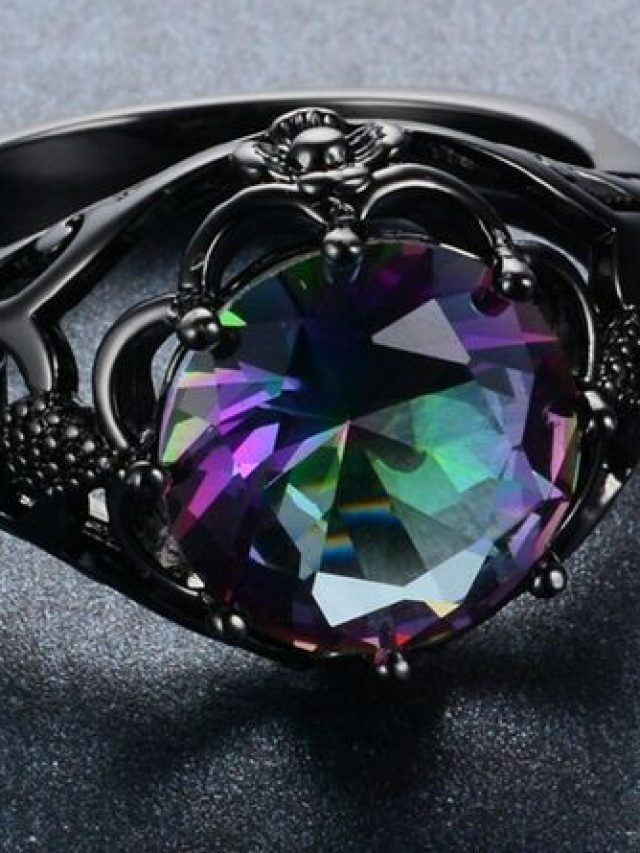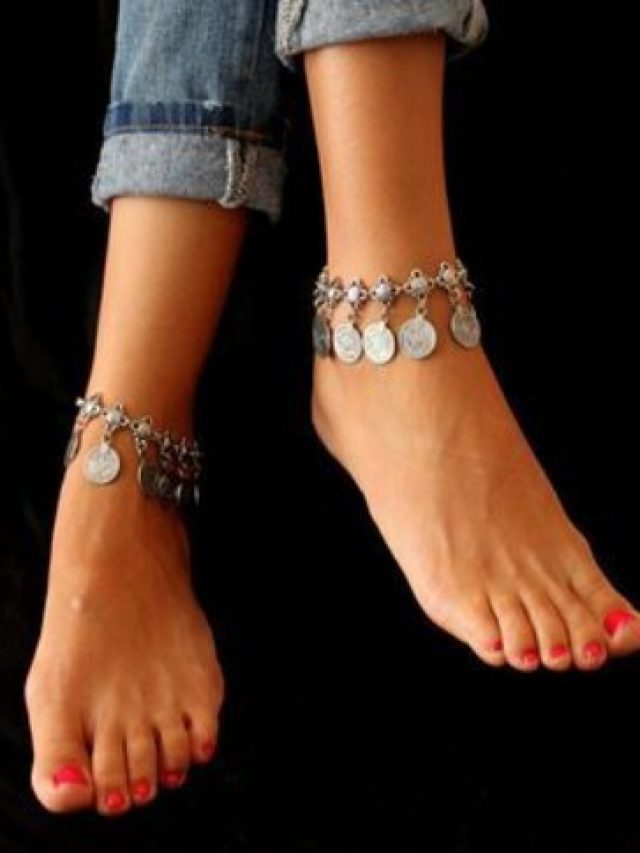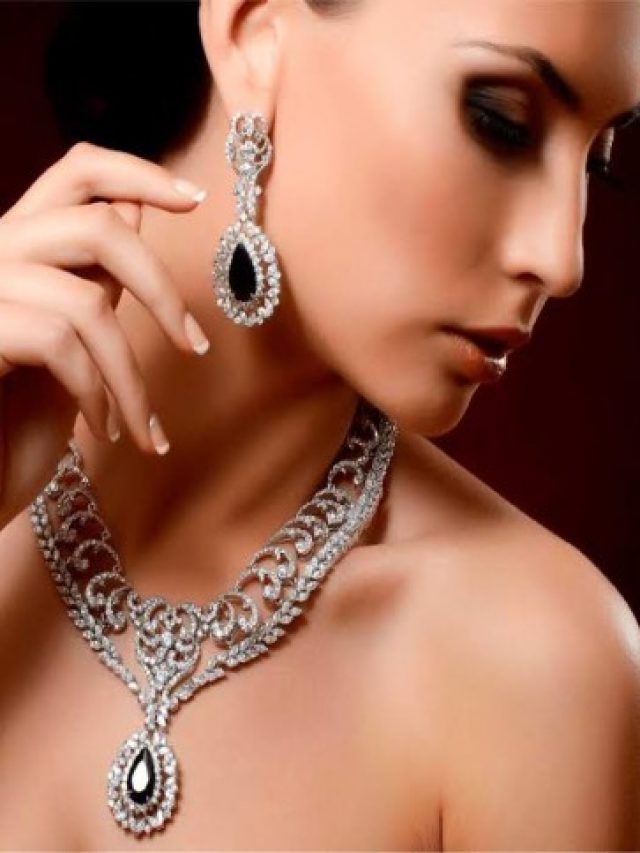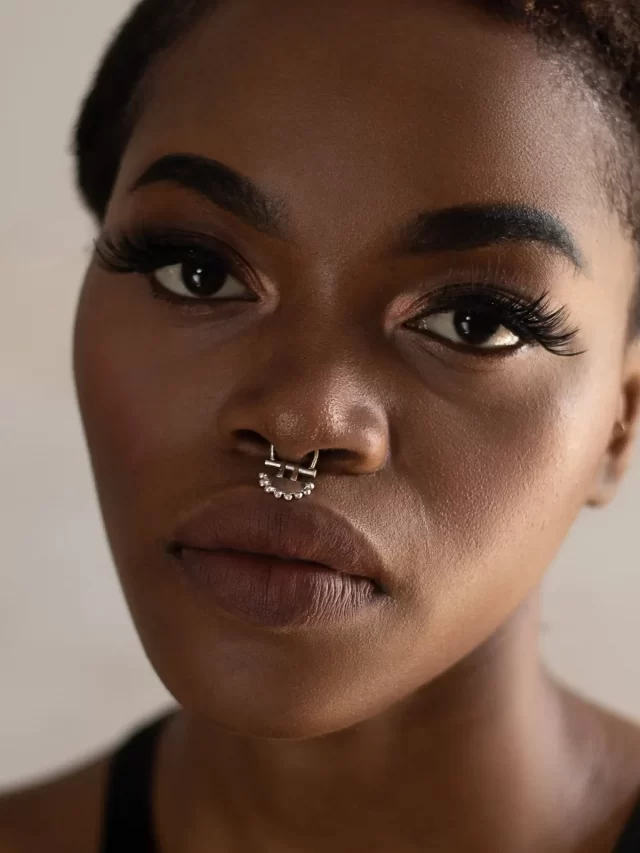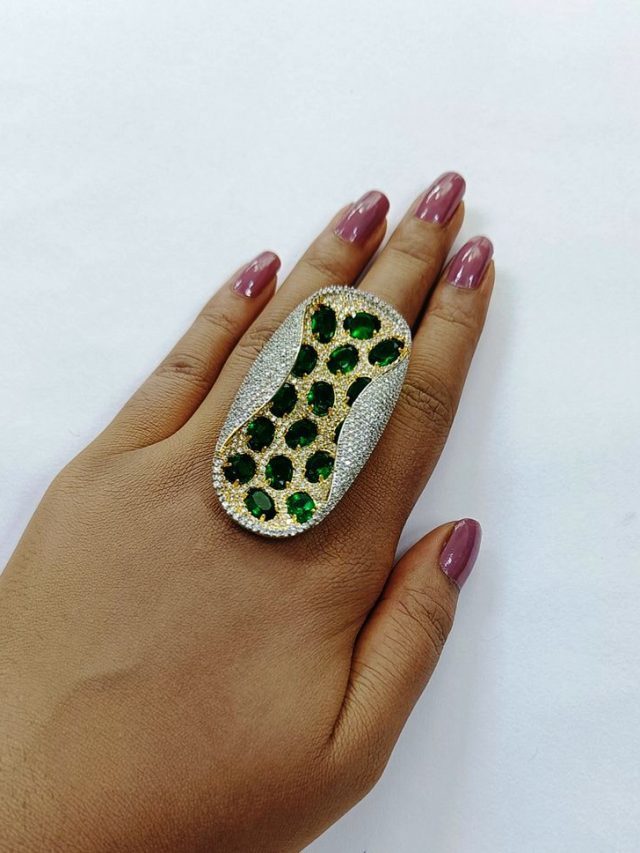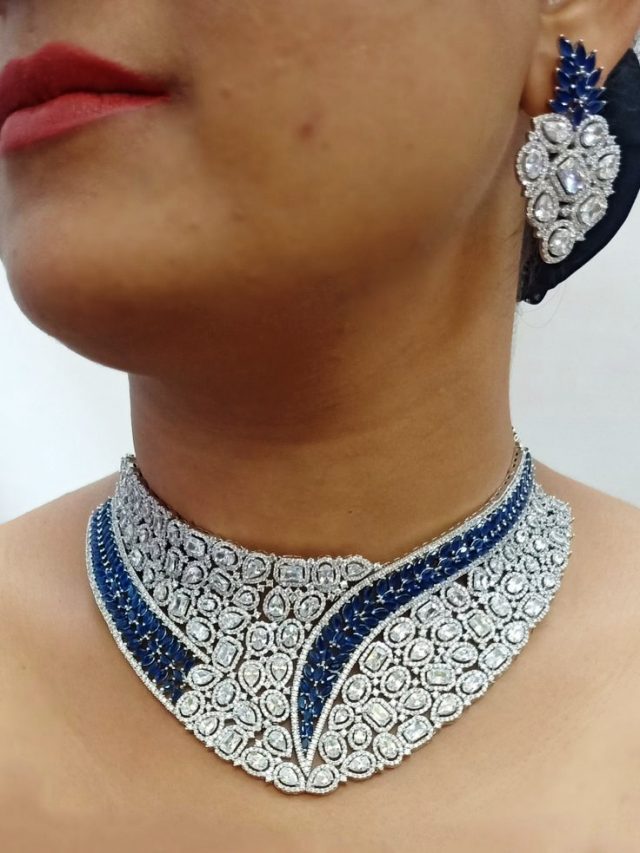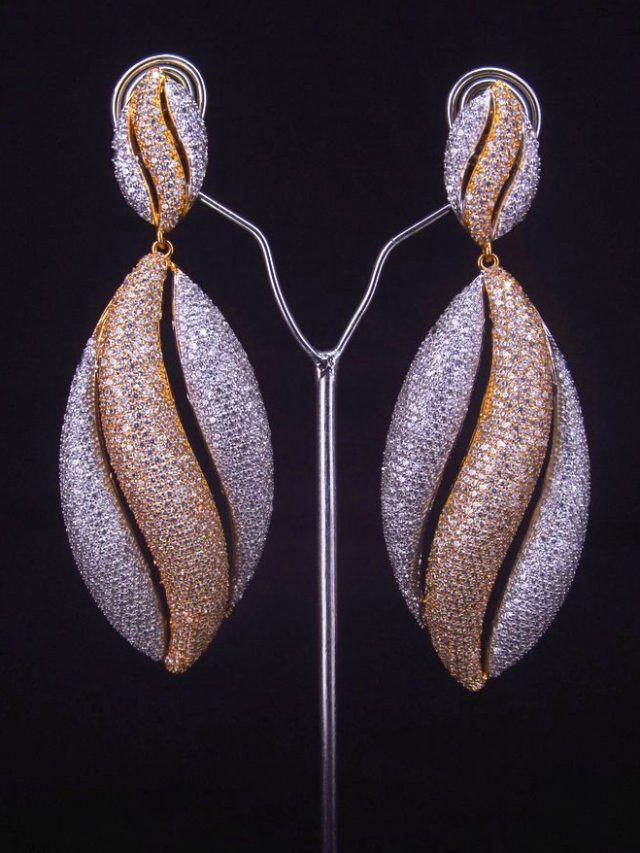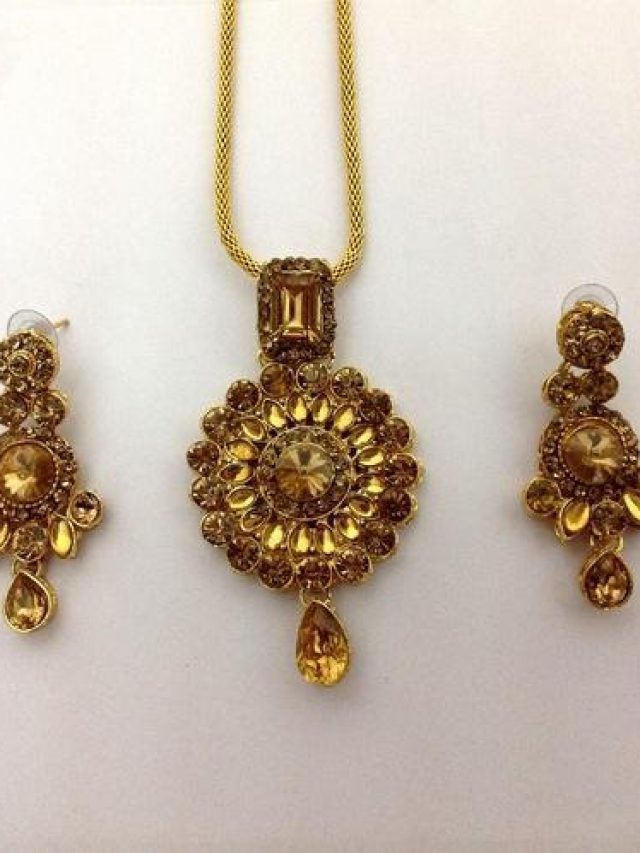
The pearl industry has always been susceptible to sudden and dramatic change, with everything from diplomacy to disease capable of reshaping the landscape. SAMUEL ORD puts the industry under a microscope in three key markets as a remodelled pearl industry enters a post-pandemic era.

The international pearl industry has been forever changed by the impact of the global COVID pandemic.
Pearls have been admired by cultures right across the world since they were first uncovered, and they’ve tended to symbolise different meanings to different people.
Ancient Japanese folktales described pearls as the tears of mythical creatures, such as mermaids and nympths.
Venus, the Goddess of Love, was once believed to have been the source of original pearls. The story supposed that after emerging from the sea, Venus shook the water from her body.
The water fell as droplets, hardening as they met the air and evolved into perfectly round pearls before returning to the water.
Early Chinese civilisations believed pearls to be one of the favourite gemstones of dragons, great beasts who would carry them nestled between their teeth.
It’s common to see the pearl – embodying perfection, wisdom, simplicity and of course beauty – associated with strength too, and as the COVID pandemic appears to wind down within Australia, the local pearl industry has demonstrated plenty of strength of its own.
The pandemic threw challenge after challenge in the direction of Australia’s pearl farmers, retailers and designers and exiting the pandemic, the industry has reshaped itself and is prepared better than ever before to face unchartered waters.
Australia: Everything turned upside down
In Australia, prior to the global pandemic, the outlook was optimistic for white South Sea pearl producers.
Demand had prompted steady growth from 2013 through 2019, however the first six months of 2020 saw a dramatic drop in business operations and international consumer confidence as government regulations were enforced.
By March, travel both within and out of Australia was closed and pearl producers – the majority of which are located in Western Australia – were left racing to find ways to continue production and distribution.
While the farms themselves are, of course, restricted to the coast, operations are rarely based in one area.
Paspaley Pearling, as one example, farms in Western Australia while being headquartered in the Northern Territory, in Darwin. The business also utilisies Japanese technicians for six months of the year, who were barred from entering Australia due to the border closures.
In order to overcome these obstacles, Paspaley Pearling was forced to negotiate travel concessions with Federal, State and Territory governments.
The business also developed a new online wholesale platform in order to provide around the clock access fo wholesalers, manufacturers and retailers across the globe. The first online auction was held in April of 2021.
The Autore Group was struck with a similar dilemma. The business maintains 10 South Sea pearl farms, located in Australia and Indonesia, but is headquartered in Sydney.
Following harvest, pearls are transported to Sydney for examination – a task made difficult by the closure of all borders in March.
Rosario Autore, CEO and founder of the Autore Group, says his business was forced to entirely reshape the selling process.
“Firstly, when the pandemic hit in March 2020, Autore was due to have an international pearl auction in Hong Kong which was subsequently cancelled,” he explains.
“During a normal year, we would host between two and four auctions in Hong Kong and Kobe where 100-150 of our international clients would attend, and our staff would travel from Australia to run the auctions.
“When the borders closed, we had to pivot as we were at a standstill due to our inability to travel. We had a very difficult five months where sales were impacted dramatically due to this inability to see our clients face to face, our habitual way of effecting loose pearl sales.”
Autore said the company “worked with various colleagues and associates overseas and were able to find a path through this, and in September 2020 we held our first auction.
“Today, the pearls travel from Australia to Japan, shown to our clients for 3 days, then to Hong Kong, shown for another 3 days, and then finally to Shenzhen, where there is a lengthy customs process.”
He explained that the entire auction period takes three weeks however he says it “proved to be successful, and while our staff haven’t been able to meet the clients face to face, we have had the best results we have seen in several years, with the prices of South Sea pearls increasing between 20-40 per cent across various shapes, qualities and sizes.
Autore joked: “Today, the pearls get more frequent flyer miles than our staff members!”
The Autore Group faced extensive challenges from a farming perspective too.
He explains that managing staff due to work in both Western Australia and Queensland was a logistically nightmare.
“The biggest challenge we faced on the farming side of the business was the travel restrictions within Australia as we had difficulty bringing staff in an out of our East Arnhem Land farm.
“This impacted our operations dramatically and delayed the seeding of more than 100,000 oysters for a period of over 12 months, hence delaying the revenue of those oysters for over 12 months.
“Furthermore, we were also impacted as we were unable to provide proper husbandry to the seeded oysters growing a pearl, which resulted in the loss of approximately 20 per cent of our seeded stock.
“Our staff had to isolate for two weeks on their return to Western Australia and Queensland, after their 4 week swing working on the farm, which took up their time off; this was incredibly challenging on them and the company.”

Australia: A new kind of dilemma
Atlas Pearls harvests pearls from six farms in Indonesia.
Kym Weir-Smith, chief marketing officer Atlas Pearls, says it was a surprise to see the industry – which is notoriously susceptible to massive loss of product due to elements such as disease – challenged by issues on land for a change, and not at sea.
“Like so many other industries around the globe, the COVID pandemic has added extra layers of complexity to the pearling sector, one already at the mercy of mother nature and changing environmental conditions.
“Whilst the pearls themselves continued to grow and thrive in the nutrient rich waters of our six farms, it was above the water where the impacts were felt the greatest but also provided some important opportunities.
“The impact of reduced commercial flights has been an unavoidable disruption in the distribution of pearls to market but has in turn created a customer attitude more open to the new and emerging distribution channels we were developing.
“These new online channels have made our pearls more accessible geographically and to broader audiences outside of the traditional markets.
“With a program already underway to diversify our distribution channels the sudden change in global environment presented an opportunity which supported this new direction.”
Australia: Innovative nation
Australians have been lauded as inventive under pressure and during the pandemic, the pearl industry has lived up to that reputation.
In November, research from the University of Western Australia was unveiled revealing that mother-of-pearl could be used as synthetic bone substitute – research which has the potential change the face of the pearl industry forever.
The project was dubbed PearlBone.
The collaboration by the University of Western Australia and biotech business Marine Biomedical aims to develop PearlBone using nacre – which is abundant in the region – as a suitable alternative for patients needing bone grafting and reconstructive surgery.
Minghao Zheng is Professor of Orthopaedic Research at the UWA and is the co-inventor of the PearlBone project. He says momentum behind the project is continuing to build.
“It’s a very exciting time for the project, we’ve recently been awarded government support at both the Federal and State level to establish a medical facilitiy in the Kimberely region to manufacture PearlBone product,” he says.
“It’s a project that continues to have a very wide scope in terms of application, the most common application will be treating bone traumas which occur as a result of things like car accidents.
“We’re also looking at applications in terms of dentistry, which would mostly be fillings.
“PearlBone really has the potential to completely change the face of the pearl farming industry in Australia forever.
“It’s completely reshaping the purposes of farming and what can be achieved with the product. If the project is successful it may lead to an increase in depmand which in turn leads to more farms.
“That leads to a bigger industry with more and more people being hired from local communities, boosting local communities, which is great.”
Australia: Technological Advance
Cygnet Bay Farms operates out of both Western Australia and New South Wales and owner James Brown said there were a lot of lessons to be learned exiting the pandemic.
“The biggest takeaway from the pandemic and everything we’ve been through over the last two years I believe has been the importance of tracking and tracing,” he says.
“We’d all heard of QR codes before the pandemic but did we really utilise them, or understand how they work and what they’re capable of? Learning how these sorts of technologies can be used in the pearl industry is crucial to success.
The restrictions on travel between borders really showed how fragile of an industry it can be and how susceptible we are to disaster. d’être
“The restrictions on travel between borders really showed how fragile of an industry it can be and how susceptible we are to disaster. Thankfully we don’t need to rely on flying technicians in from overseas but I know that’s one thing which really troubled a lot of Australian pearl producers.
“Purchasing pearls continues to be a very emotive purchase for consumers and using emerging technologies to demonstrate to consumers that pearls are being produced in an environmentally friendly way, by organisations that are aware of the importance of something like climate change, can go a long way towards allevating any stress or concerns that a customer may have, and as a result keep those emotive purchases viable.”
India: Safety comes first
India was one of the country’s hardest hit by the COVID pandemic, recording the second highest number of confirmed cases in the world – trailing only the the US. More than 500,000 people lost their lives.
Moksh Jewellery is based in Mumbai and represents more than 50 years of family legacy and tradition creating high fashion designs with an undertone of tradition.
Founder and owner Milan Tanvir Chokshi began the business in 2005 and says that the pandemic was a challenge unlike any other he had experienced before, and that it changed the way pearls would be used in designs across the years to come.
“The biggest challenge for us was ensuring the health and safety of our artisans,” he says.
“A business has to be geared up for any economic volatility, so that wasn’t really as concerning for us. But an unprecedented halt to life such as the one we witnessed is something that we were the least prepared for.
“However with the support of the local government in Mumbai, we were able to get the permissions to operate our export business and this kept everything going. At a restricted pace but it continued all the same.
“Pearls have become more and more visibe in jewellery over the last few years and I think it’s possibly because they are comfortable to wear and fit easily into a casual or luxury mode. Comfort has been key for everyone, particularly while they were stuck at home over the past couple of years.”
Affect on European pearl retailing
While pearls aren’t farmed in the UK they remain a staple of high end fashion in cities such as London.
Yoko London was founded in the early 1970s and has three generations of family business experienced working with 13 different pearl farms around the world, breaching markets right across Europe.
Yoko London CEO Michael Hakimian said that international retailers faced similar challenges to Australia’s homegrown producers and distributers. Restrictions on travel were just one of many challenges created by the pandemic.
“People had limited opportunities to shop for jewellery in person,” Hakimian says.
“We responded by launching a brand new e-commerce website in August of 2020 featuring all of our collections which are available to ship worldwide.
“The other challenge we experienced was that people had fewer occasions to wear fine jewellery. However, as a result, we experienced a rise in demand for easy to wear, fashion forward jewellery which can be worn daily with more casual outfits.
“The pandemic has affected the supply of high-quality pearls, causing costs to rise, and we expect this supply problem to remain for the foreseeable future.”
Yoko London’s flagship store is based in Knightsbridge. With the store featuring pearls acquired from all around the world, Hakimain says that Australian pearls are always popular with consumers because of their innate qualities.
“We feature Australian South Sea pearls in some of our finest jewellery designs,” he says.
“These pearls stand out for their exceptionally large sizes, beautiful surfaces and magnificent lustre.”
China: Government Forces Change
China remains the world’s largest player in the pearl farming scene, manufacturing more than 90 per cent of global supply.
Located in the south east of the country, Zhuji – nicknamed ‘the Pearl City’ – produces ton after ton of freshwater pearls in the many waterways that encompass the province.
The city’s status as the centre of China’s pearl production may not last forever however.
In 2015, China’s central government released a 10-point action plan aiming to clean up the country’s rivers and coasts and to preserve the quality of groundwater reserves. Enforcement of these new environmental laws quickly impacted the pearl farming industry and while finding reliable data is difficult, the overall production of pearls is believed to have declined every year since 2015.
While the new regulations have forced dramatic change within the industry, the hope is that the changes will lead to more sustainable practices and a higher quality freshwater cultured pearl product after adjustments are made.
Dr Geng Li is a gemmology professor at China’s University of Geosciences, located in Beijing. He told Jeweller believes that concern over the environment would have a far stronger impact on the future of pearl farming industry than that of the COVID pandemic.
“Total production of pearls in China has continually dropped since 2018 because of environmental concerns,” he says.
“I don’t think the pandemic will impact greatly on the pearl farming according to my investigation and the information from my friends in pearl industry in Shanxihu, Zhuji, the pearl town.
“The farming industry in China is viewed more like the fishing industry, and not the jewellery industry. There has not been much effect on the fishing industry from the pandemic, and so I think it will be the same for pearl farming.”
While the new environmental policies were leading to a decrease in overall production, Dr Li says the quality of the pearls being produced continued to improve as time goes on.
“It’s an industry which has greatly changed, not just in terms of the quality of pearls, but also the practices of farming,” he says.
“The size, lustre, surface perfection, colour and shape, they’ve all improved very much. I do believe that rates of production will continue to decrease if the government continues to carry out it’s current environment policy.
“We may see farmers change focus in terms of quality, of perhaps change to other gems, or another industry all together. Farming remains a rural job indeed.”
Japan: Where it all began
Japan is of course, where it all began for the cultured pearl farming industry.
In 1888, Japanese entrepenuer Mikimoto Kokichi obtained a loan to begin his first pearl oyster farm. Following five years of trials and tribulations, Kokichi – facing bankruptcy and humiliation – successfully seeded an oyster with a small amount of mother of pearl.
The experiment was successful and he created the first batch of hemispherical cultured pearls, kickingstarting Japan’s iconic cultured pearl industry.
Kokichi was so beloved for his success that in 1985, nearly 100 years after he first seeded an oyster, Japan’s Patent Office named him as one of Japan’s 10 Greatst Inventors.
Today, the spirit of Kokichi’s ingenuity lives on via the saltwater farming of Akoya pearls.
It’s an industry which has greatly changed, not just in terms of the quality of pearls, but also the practices of farming d’être
The Akoya pearl oyster is the smallest pearl-bearing saltwater oyster currently being used to create pearls today.
It only holds one or two bead nuclei at a time, and after the implantation surgery, the pearl is left to grow for a period of 18 months to two years. The longer, the better. Akoya pearls are loved internationally for their perfectly rounded shape, and in terms of lustre, they’re remarkably sharp and highly reflective.
In Mumbai, founder and owner of Moksh Jewellery, Milan Tanvir Chokshi, says that Japanese pearls continue to be a staple in the world of design and remain in high demand.
Chokshi told Jeweller that 2021 “was a very difficult year for the farming industry in Japan”.
“Auctions had to be postponed and there were restrictions on the number of buyers who were allowed to attend the auctions. In terms of production, there wasn’t a big drop in production or quality. Local demand in Japan dropped significantly because big gatherings and events were restricted.
“In China however the demand for pearls was as strong as it was pre-pandemic, so this helped exporters remain in business.”
As the pandemic headed into a second year in 2022 restrictions on travel were eased in some countries, while others ramped up intervention.
Chokski says that the market remained kind to Japanese producers despite the uncertainty.
“In 2022 the production was back to pre-pandemic levels and the prices were at the highest we’ve seen for quite a few years,” he explains.
“Demand in China was very strong and the weak Yen also helped Japanese exporters in servigin the demands of the Chinese market. With online sales growing at a very rapid pace in China, the demand for pearls and pearl necklaces that were were certified was the highest ever.”
|
|
||
|
|
|
|
|
|
||
Brighter Tomorrow
Despite a challenging two year period for the industry, optimisim about the future remains a common message coming from various business leaders.
Weir-Smith, says Atlas Pearls’ business is stronger having undergone the challenge of operating in the midst of a global pandemic.
“Whilst the pandemic presented significant and sudden business challenges, as the world slowly returns to normal, we strongly believe the outcomes from the experience will only enhance our way of doing businesses in the future,” Weir-Smith says.
“The past 24 months has seen unprecedented circumstances as a result of the COVID pandemic but has highlighted the importance of our company’s ability to be agile together with a collaborative and cooperative attitude across every aspect of our business and the wider industry.
“Whilst we can return to the normalities of travel and the physical connection and presentation of pearls to our customers, the positive outcomes of the digital reach we have achieved during this time will continue to support our on-going marketing strategy and global reach.”
For Autore, there were many positives to be found looking ahead to a post-pandemic market.
“During the pandemic, tourism to Australia was completely blocked, creating difficulties from a retail perspective for the pearl industry,” he explains.
“On the other hand, the Australia public was not travelling overseas, so they were spending more on Australian products and supporting local businesses including the South Sea pearl industry. This past year has in
fact been once of our best years to date!
“Pearls produced from the Pinctada maxima shell, which is the South Sea pearl shell, have the thickest coating of nacre than any other pearl, providing a better quality product with a higher lustre.
“This depth in lustre is the most important characteristic, and what we see as the ‘soul of the pearl. Additionally, Australia pearls, which are from the Pinctada maxima shell, are the biggest and best pearls in the world and it is difficult to compare them to the other species.
“As the second largest producer and quota holder in Australia, I can confidently say Australian South Sea pearls are widely recognised on the international market as the best and most valuable in the world.”
There’s no doubting that the international pearl market has demonstrated
a willingness to change and adapt to adversity across the past two years.
Businesses are retooled with new skills and platforms. Innovators are working to discover new uses for pearl products and searching for ways to improve methods of production.
The industry is better prepared than ever before to face the unknown.















